SLUSCD4B March 2017 – May 2018 TPS543C20
PRODUCTION DATA.
- 1 Features
- 2 Applications
- 3 Description
- 4 Revision History
- 5 Device Comparison Table
- 6 Pin Configuration and Functions
- 7 Specifications
-
8 Detailed Description
- 8.1 Overview
- 8.2 Functional Block Diagram
- 8.3 Feature Description
- 8.4
Device Functional Modes
- 8.4.1 Soft-Start Operation
- 8.4.2 Input and VDD Undervoltage Lockout (UVLO) Protection
- 8.4.3 Power Good and Enable
- 8.4.4 Voltage Reference
- 8.4.5 Prebiased Output Start-up
- 8.4.6 Internal Ramp Generator
- 8.4.7 Switching Frequency
- 8.4.8 Clock Sync Point Selection
- 8.4.9 Synchronization and Stackable Configuration
- 8.4.10 Dual-Phase Stackable Configurations
- 8.4.11 Operation Mode
- 8.4.12 API/BODY Brake
- 8.4.13 Sense and Overcurrent Protection
- 8.4.14 Output Overvoltage and Undervoltage Protection
- 8.4.15 Overtemperature Protection
- 8.4.16 RSP/RSN Remote Sense Function
- 8.4.17 Current Sharing
- 8.4.18 Loss of Synchronization
-
9 Application and Implementation
- 9.1 Application Information
- 9.2
Typical Application: TPS543C20 Stand-alone Device
- 9.2.1 Design Requirements
- 9.2.2 Detailed Design Procedure
- 9.2.3 Application Curves
- 9.3 System Example
- 10Power Supply Recommendations
- 11Layout
- 12Device and Documentation Support
- 13Mechanical, Packaging, and Orderable Information
Package Options
Mechanical Data (Package|Pins)
- RVF|40
Thermal pad, mechanical data (Package|Pins)
- RVF|40
Orderable Information
7.6 Typical Characteristics
VIN = VDD = 12 V, TA = 25°C, RRT = 40.2 kΩ, TA= 25°C (unless otherwise specified)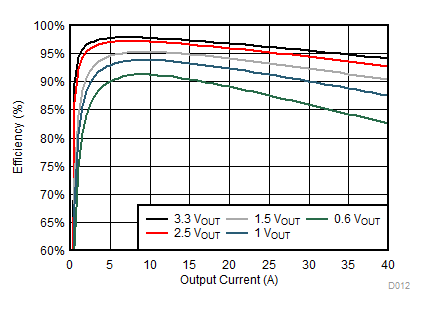
| VIN = 5 V | 500 kHz | 25°C |
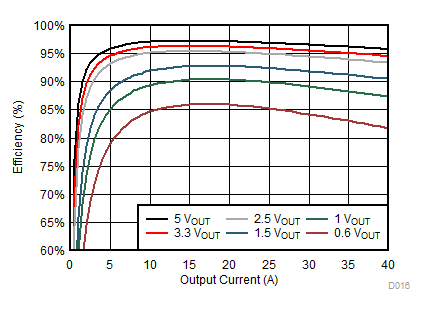
| VIN = 12 V | 500 kHz | 25°C |
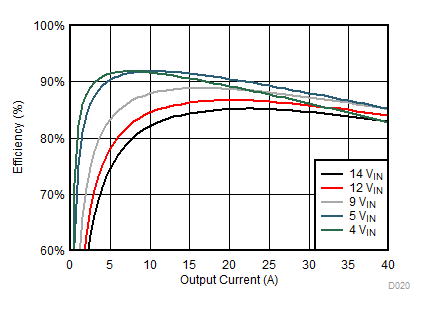
| VOUT = 1 V | 1 MHz | 25°C |
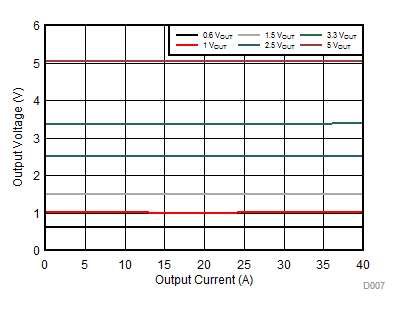
| VIN = 12 V | 500 kHz | 25°C |
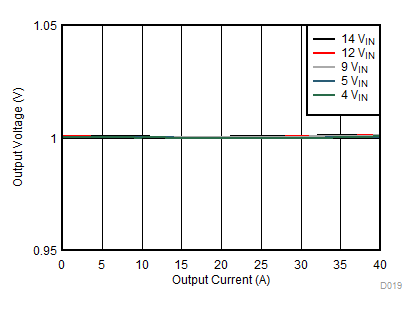
| VOUT = 1 V | 1 MHz | 25°C |
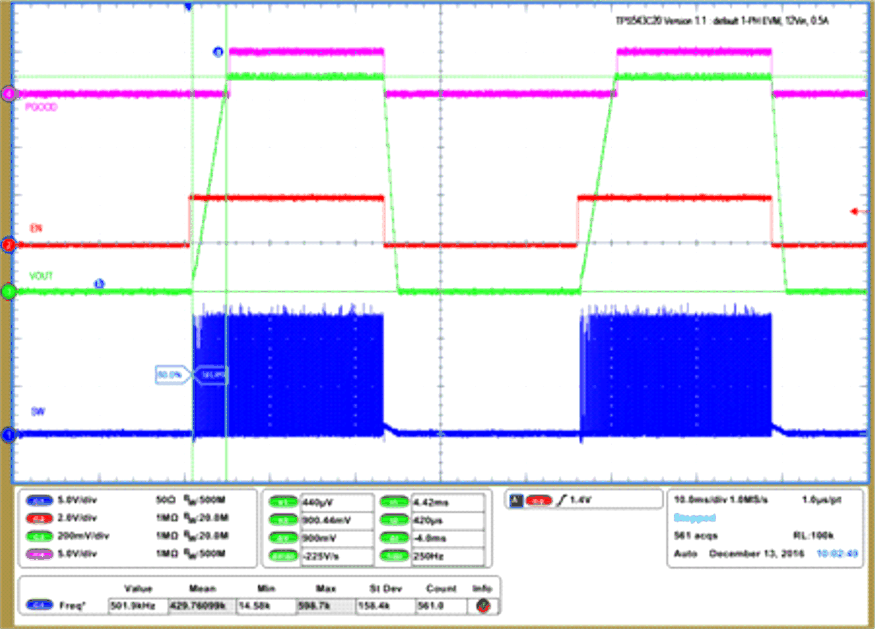 Figure 11. Output Voltage Start-Up and Shutdown
Figure 11. Output Voltage Start-Up and Shutdown
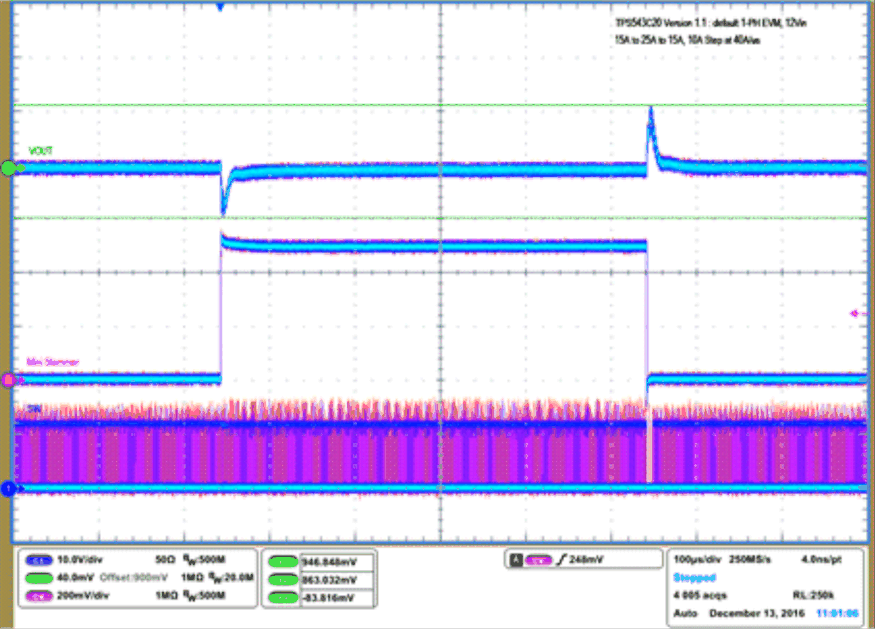
| 15 A to 25 A to 15 A, 10-A Step at 40 A/µs | ||

| VIN = 5 V | 500 kHz | 25°C |
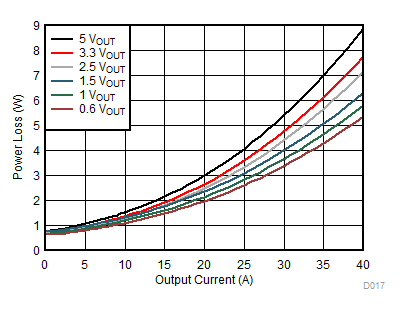
| VIN = 12 V | 500 kHz | 25°C |
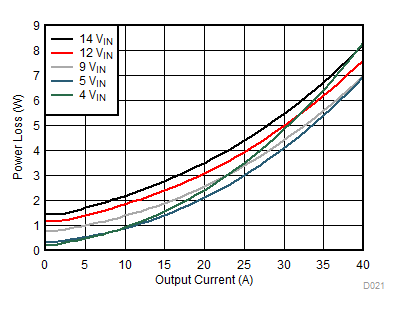
| VOUT = 1 V | 1 MHz | 25°C |
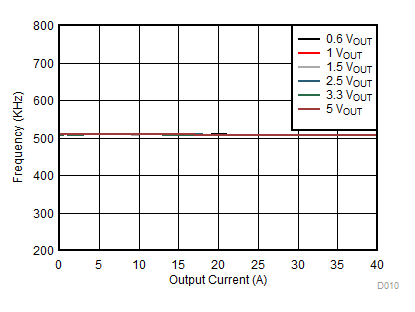
| VIN = 12 V | 500 kHz | 25°C |
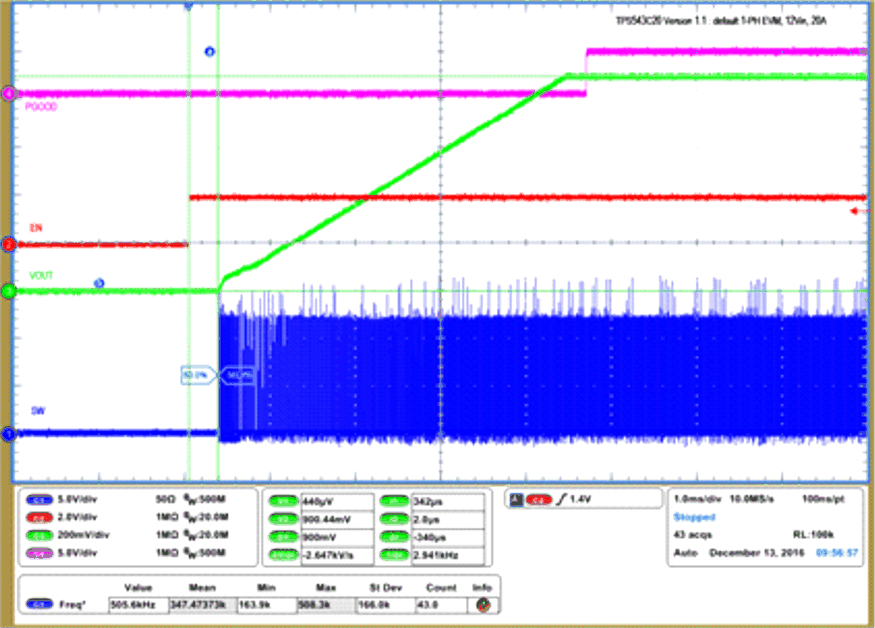 Figure 10. Start-Up From EN
Figure 10. Start-Up From EN
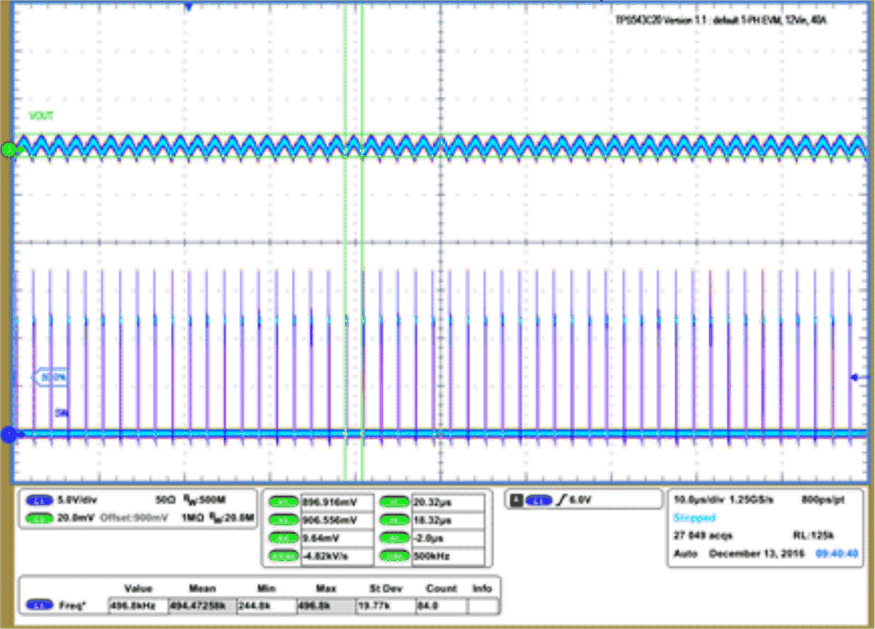 Figure 12. Output Voltage Ripple at Steady State
Figure 12. Output Voltage Ripple at Steady State